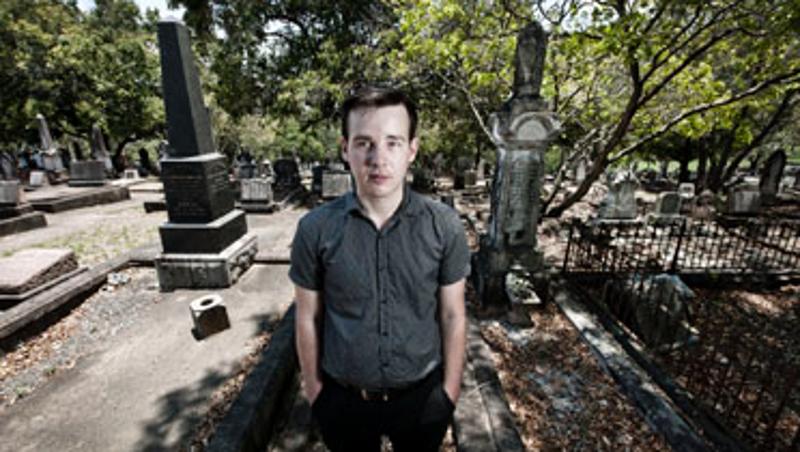
Samuel Finegan hasn't seen a ghost, but it's not for want of trying.
The QUT PhD creative writing student has been on seven ghost tours around the country in a quest to understand Australia's oral and written stories about our most high-profile ghosts and haunted places.
Mr Finegan said that when a culture had developed its own stock of ghosts stories it was a sign of maturity.
"Ghost stories around actual places and events are a proof of suffering, they represent a coming of age as a culture," Mr Finegan said.
"Australia's ghost stories are structured around places or events where something is unfinished or has gone wrong. They deal with histories that haven't been dealt with."
He said many of our oral ghost stories were light on detail and of dubious origin.
"Many of our ghosts are unnamed: the Brisbane Arcade's milliner who walks around the top floor; the ladies and maids seen in Newstead House; the anonymous body occasionally seen swinging inside the Tower Mill on Wickham Street.
"We don't know who the ghost caretaker who used to drive council workers out of City Hall's Room 302 might have been.
"What these stories do is not just entertain, or provoke a few shivers, but assure us that we do have history - and that our history matters, whatever the consequences of that may be."
Mr Finegan said Port Arthur stood out as Australia's key ghost site.
"It is haunted by the ghosts of convicts who were brutally treated there.
"On site was the Separate Prison. It was a silent prison where the warders wore slippers and communicated via sign language and the prisoners weren't allowed to talk and exercised with hoods on their heads to prevent communication. Authorities had to build a lunatic asylum because they produced so many.
He said Port Arthur was now doubly haunted by the 'Port Arthur massacre'.
"While the guides who take visitors around Port Arthur today are mostly silent on the issue, the ghost hunting guides and media coverage of the site tend to frame the 1996 massacre as something inevitable - there's the sense that if that awful event was going to happen in Australia it could happen at Port Arthur."
Mr Finegan said national guilt about the treatment of Indigenous people suffused our ghost stories.
"Works such as Lucy Sussex's short stories and Tim Winton's Cloudstreet have ghosts as symptoms of these historical atrocities, they work as an antidote as they acknowledge and attempt to atone for those wrongs.
"Places of massacre of Indigenous people tend to be less marked because there are few physical monuments but these events haunt our literature as an excess of meaning invested in a place or happening."
Mr Finegan said ghost stories really took off as a genre after the Industrial Revolution and had continued to haunt literature ever since.
"Telling or writing ghost stories became a way to invoke the supernatural as a reaction to notions of the sacred or supernatural being broken down and replaced with scientific rationalism.
"Culturally we all understand the features of ghost stories - if we see a strange face at the windows, or distortion in photos we can read the connection between these and ghosts, even though we might not believe in them.
"Ghost stories can be frivolous or entertaining but at the same time they are attempts to do right by the dead and do right by history."
Media contact: Niki Widdowson, 07 3138 2999 or n.widdowson@qut.edu.au


